Blackjack Strategy | How to Win at Blackjack
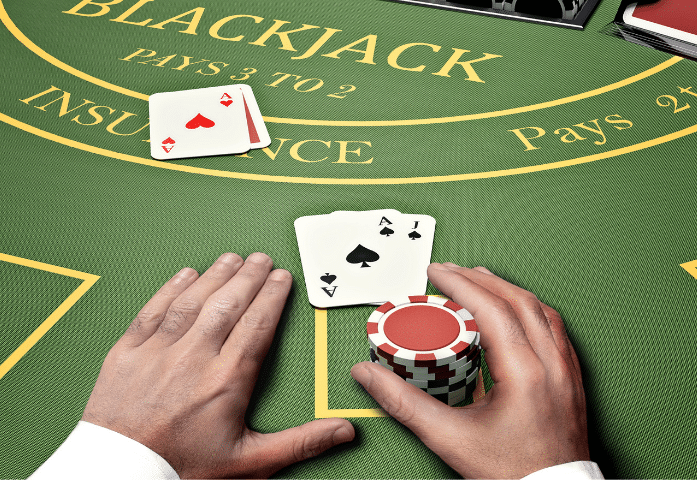
Blackjack is known as a casino game that already has a fairly favorable house edge, which is the statistical advantage that the casino holds in any given game. Depending on who you ask, the house edge for blackjack can be around 1.5% to 2% with absolutely no strategy whatsoever — this is the house edge a new player would face when they sit down at a blackjack table.
But, if you apply some solid strategy on when to hit, stand, or split, then you can increase your chances of a favorable hand and effectively decrease the house edge. We’ll share with you how you can best do that in a variety of situations.
What Does the House Edge Actually Mean?
Let’s talk real quick about what the house edge means in practical terms. If you’re looking at a house edge of 5%, that translates to the house eventually taking an average of 5 units from every 100 units you spend.
So, if you spend $100 at a casino game with a 5% house edge, then you can expect to lose about $5 out of that $100, on average.
In comparison, the house edge for slots are often between 2% and 5%. Every casino game and variation of it has a house edge, it’s how the casino profits from offering that game. Before you gamble at a live or online casino, it’s a good idea to research the house edge. This way, you can know how much each game will pay out (on average) over its lifespan, and you’ll also be able to know which games offer players the best returns on their wagers.
What Impacts the House Edge in Blackjack?
It’s obviously within the casino’s interest to keep some sort of edge to guarantee their own profits and continued business. A variety of factors come into play to create the house edge in blackjack.
Player Order
First off, the house does get a big advantage from the fact that the players go before the dealer. Oftentimes, the player will go over 21 and bust, losing their wager without the dealer even having to reveal their full hand. If the player doesn’t bust and stands on a hand that doesn’t total 21, the dealer still has the chance of winning the round.
Number of Decks
Most blackjack tables won’t offer single-deck games and instead will put multiple decks of cards in a shoe from which the dealer can pull. The shoe could contain four decks or even eight decks, which makes it harder to count the cards that have been played and keeps the house with more of an advantage. Even with a single-deck table, the dealer can still shuffle frequently, again making it harder for players to count cards and try to gain an edge.
Dealer With a Soft 17: Hit or Stand?
In blackjack, there are soft hands and hard hands. A soft hand is when you have an ace because the ace can be either a 1 or an 11. A hard hand, meanwhile, doesn’t contain an ace.
Dealers will always stand on a hard 17, but different casinos have different rules about how the dealer should treat a soft 17 — some require the dealer to stand on a soft 17, while others require them to hit on a soft 17. While hitting on a soft 17 does open up the dealer to more easily bust, this also means that if they don’t bust, what would have been a 17 is a higher hand that can more easily beat the player.
You can check the blackjack table’s layout for the rules. If it says “Dealer must stand on all 17s,” then the dealer will stand on a soft 17. If it reads “Dealer hits on soft 17,” then you know what you’re dealing with.
Table Payouts
Finally, there’s a potential scenario that won’t affect the odds of you winning but will impact your bankroll and thus how much you could gain or lose in a sitting. Not all blackjack tables will offer the traditional 3-to-2 payout for blackjack. Some might offer less favorable payouts like 6-to-5. If you wager $10 at a 3-to-2 table and got blackjack, you’d get $15 back. If you wager $10 on a 6-to-5 table, you’d only get $12 back. Your wins are smaller, meaning that you’re possibly going to lose your overall bankroll faster, giving that money back to the house.
Different Blackjack Strategies to Lower the House Edge
Your best strategies to lower the house edge in blackjack involve knowing when to make the most mathematically favorable decisions — when to hit, when to stand, when to split, and more.
Here, we’ll be breaking down your strategies for single-deck blackjack, two-deck blackjack, and four- to eight-deck blackjack.
For your easy reference, here is our key for the different decisions you should make in these scenarios:
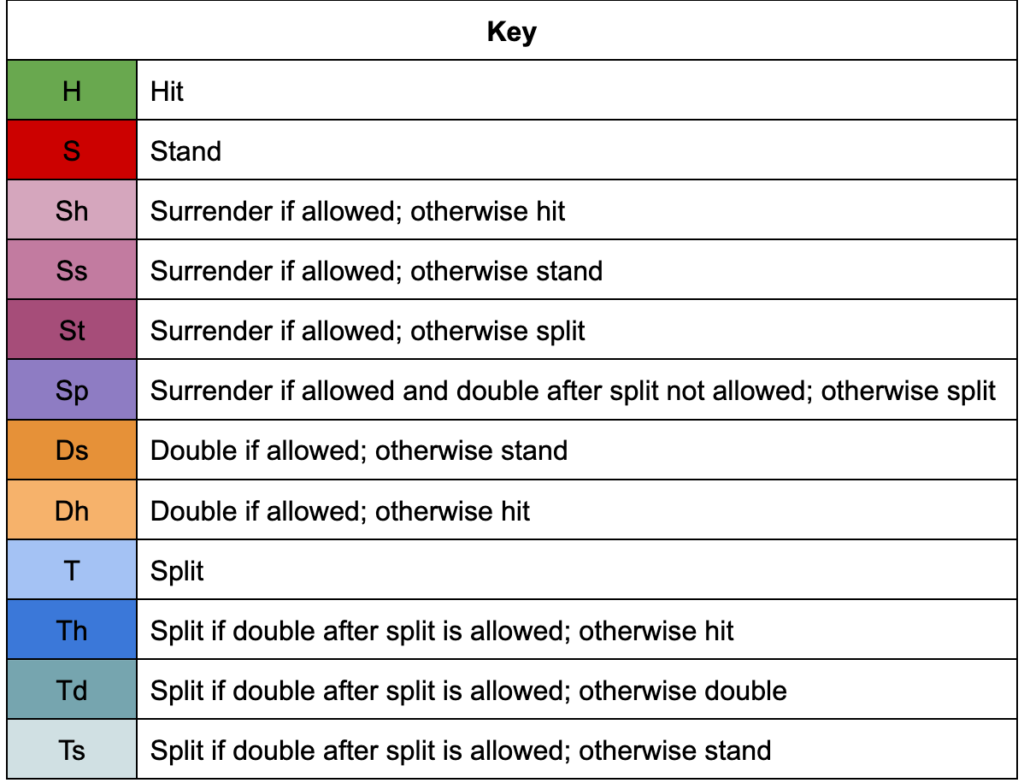
Hitting on Soft 17 Strategy (Single Deck)
Make sure that you can fulfill these criteria if you’re playing single-deck blackjack and want to use this strategy:
- The dealer will be using only one deck for the game.
- The dealer hits on a soft 17.
- After a split, you can double your bet.
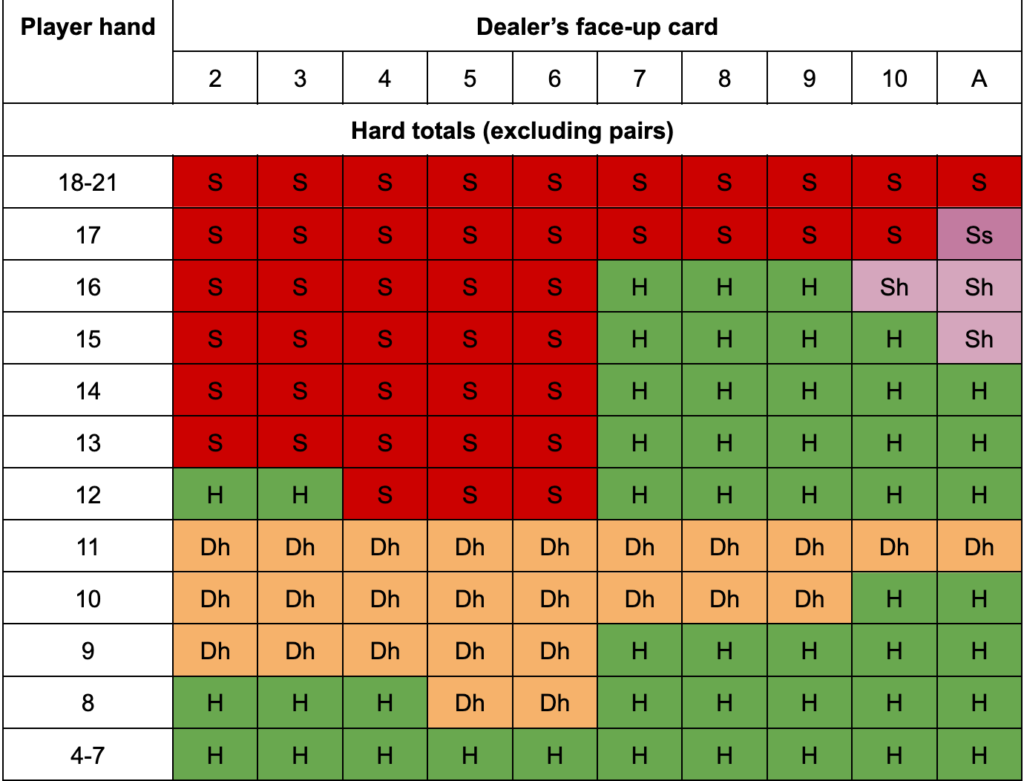
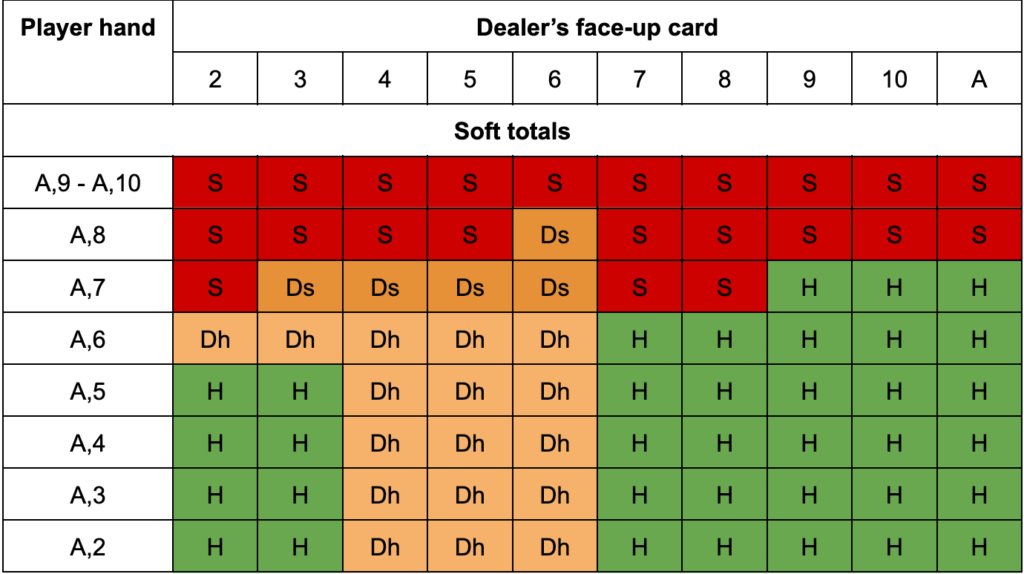
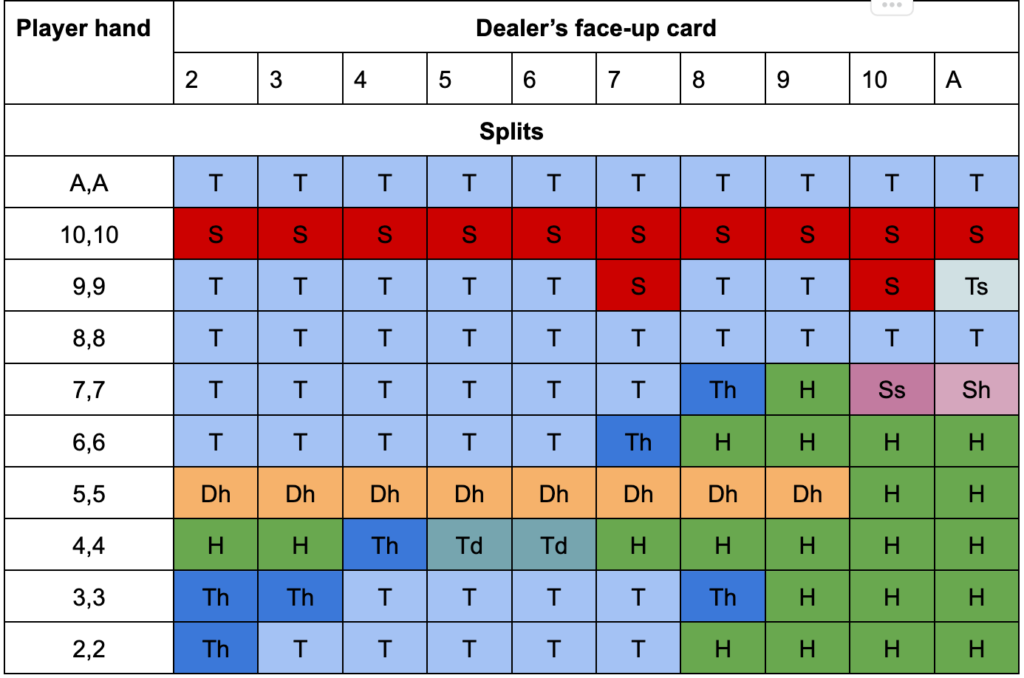
Standing on Soft 17 Strategy (Single Deck)
If you’re playing single-deck blackjack and want to use this strategy, make sure all of these factors are true:
- The dealer will be using only one deck for the game.
- The dealer stands on a soft 17.
- After a split, you can double your bet.
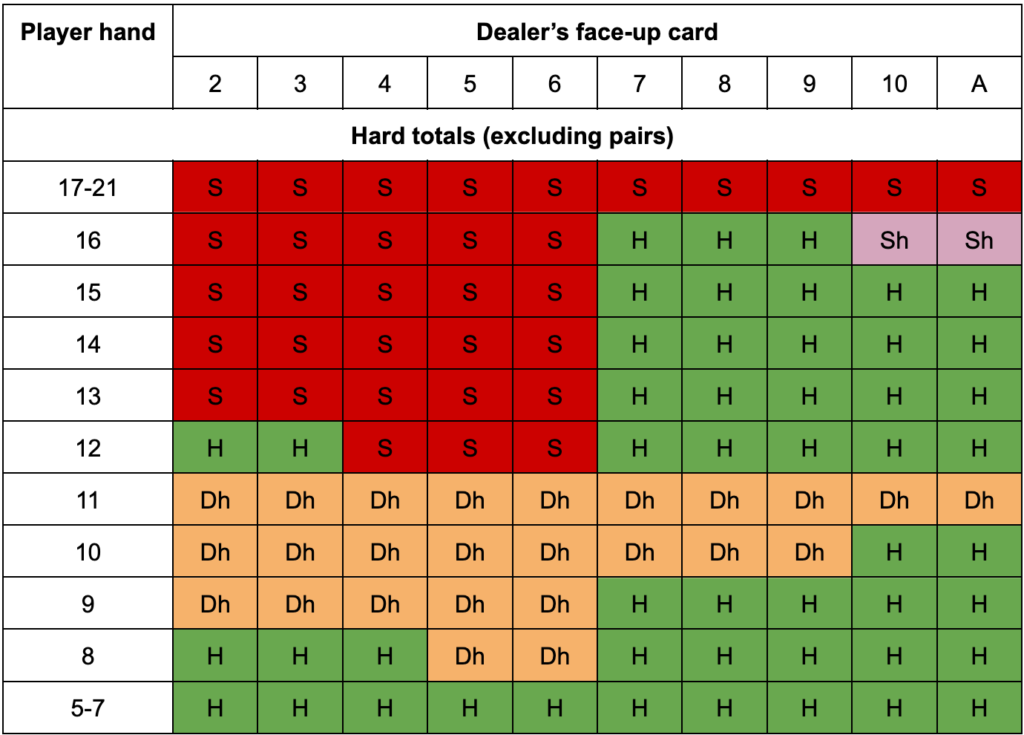
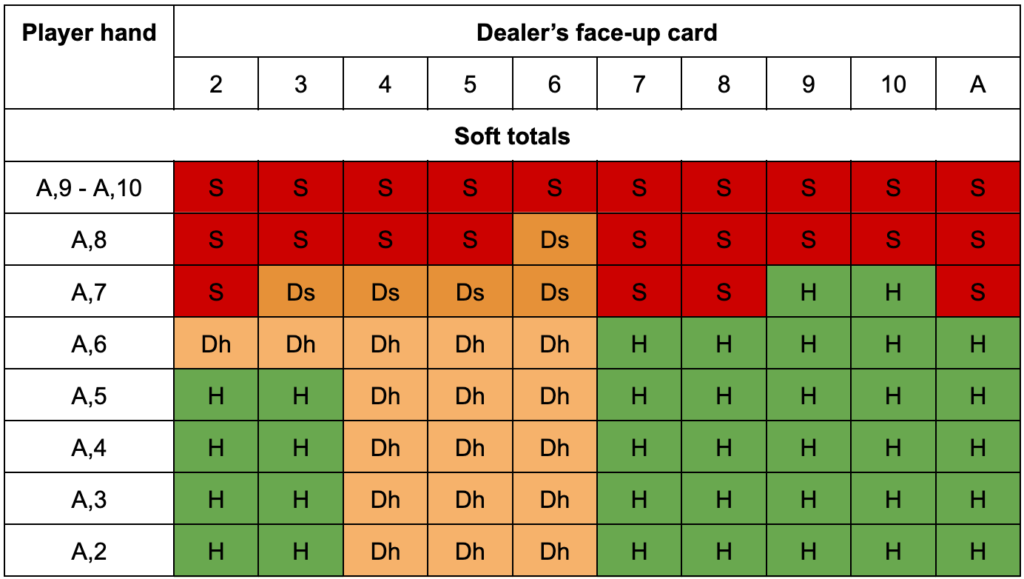
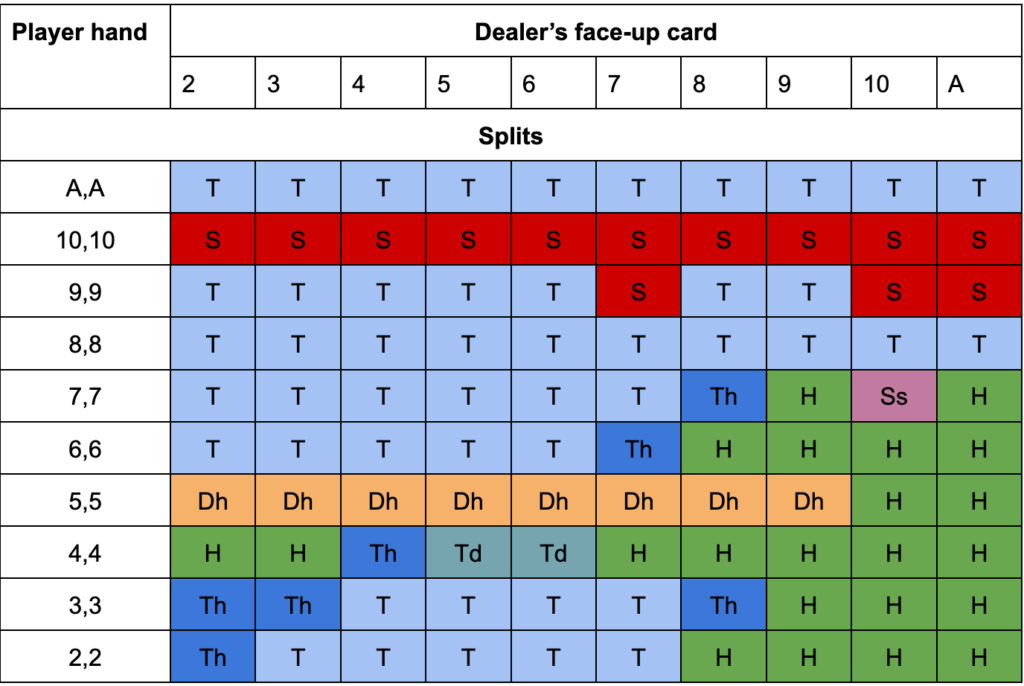
Hitting on Soft 17 Strategy (Two Decks)
Make sure that you can fulfill these criteria if you’re playing two-deck blackjack and want to use this strategy:
- The shoe has two decks shuffled together.
- The dealer hits on a soft 17.
- After a split, you can double your bet.

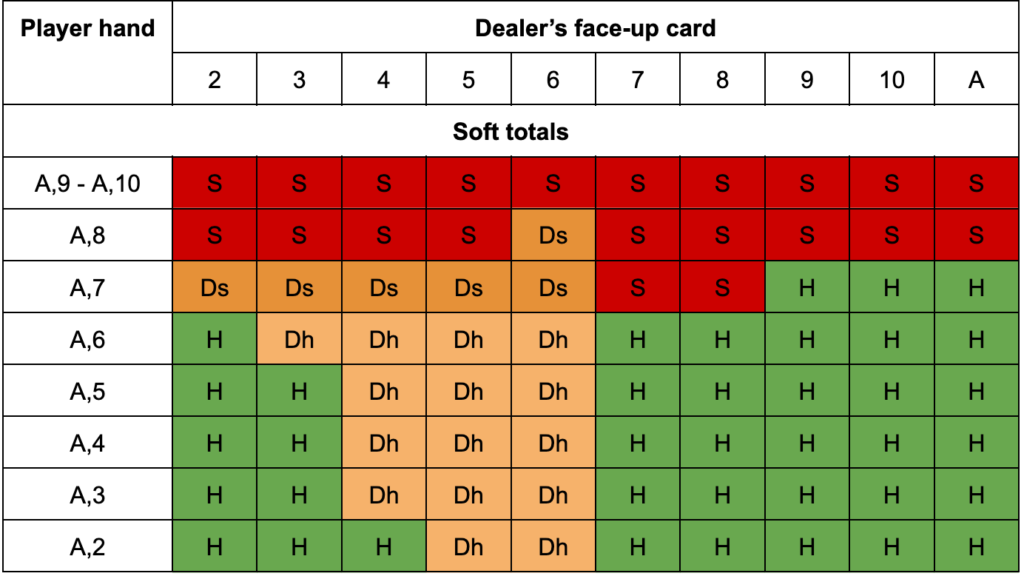
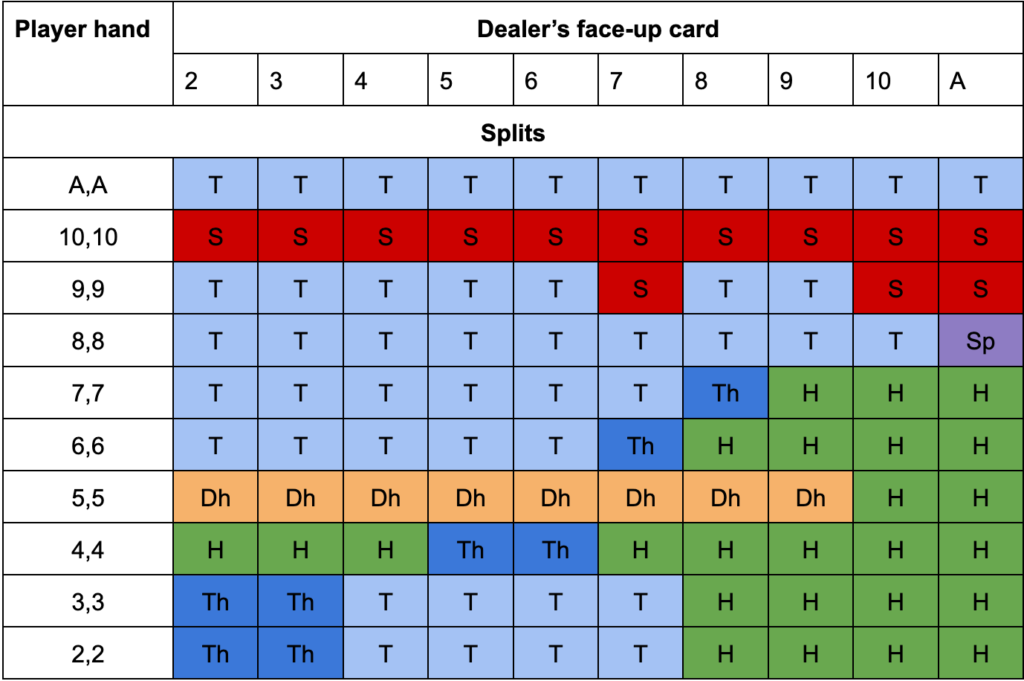
Standing on Soft 17 Strategy (Two Decks)
Make sure that you can fulfill these criteria if you’re playing two-deck blackjack and want to use this strategy:
- The shoe has two decks shuffled together.
- The dealer stands on a soft 17.
- After a split, you can double your bet.
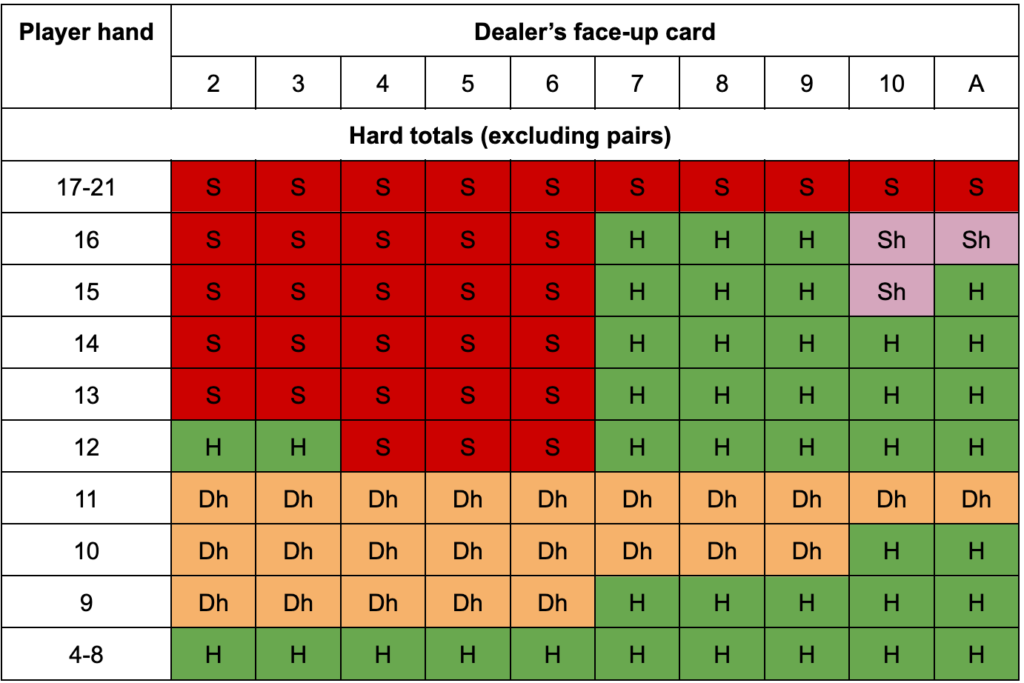

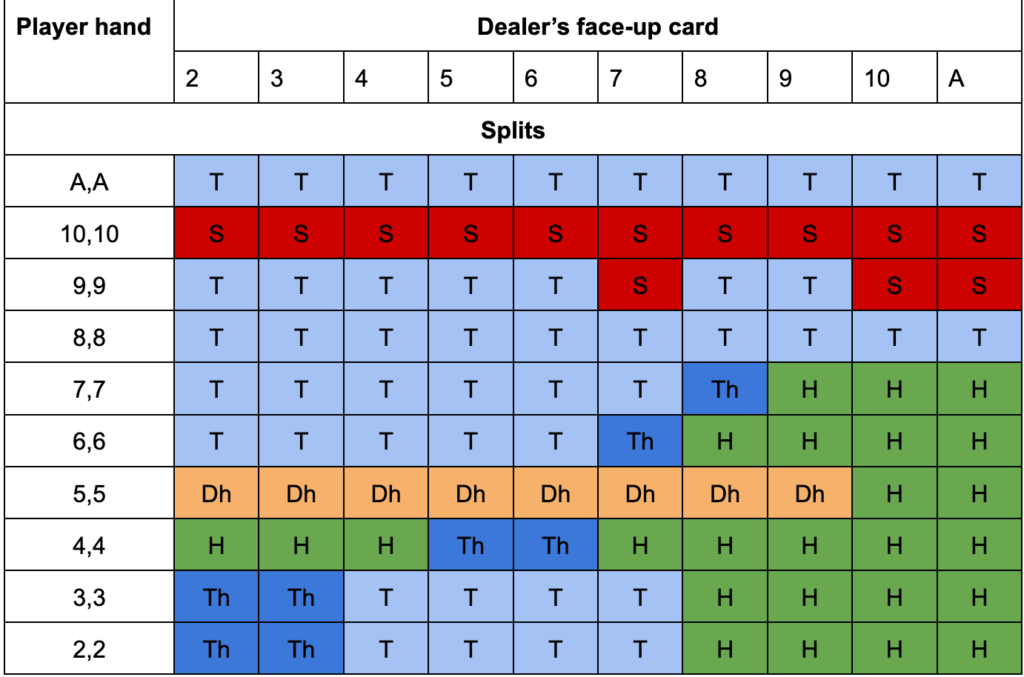
Hitting on Soft 17 Strategy (Four to Eight Decks)
Make sure that you can fulfill these criteria for this type of blackjack strategy:
- The shoe has four to eight decks shuffled together.
- The dealer hits on a soft 17.
- After a split, you can double your bet.
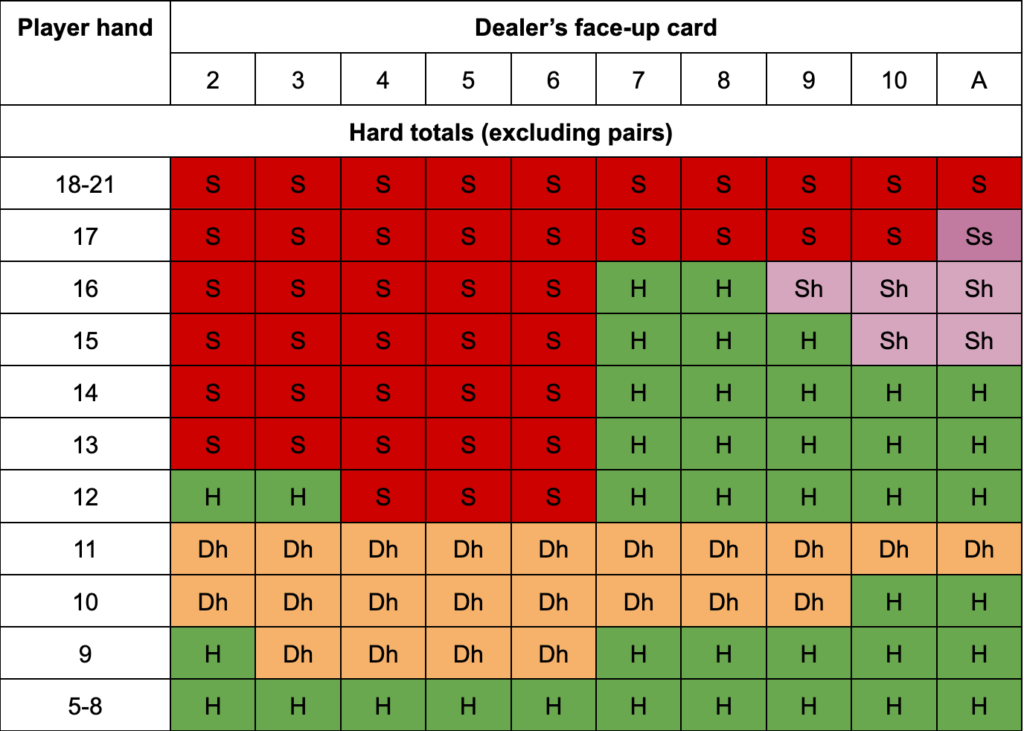

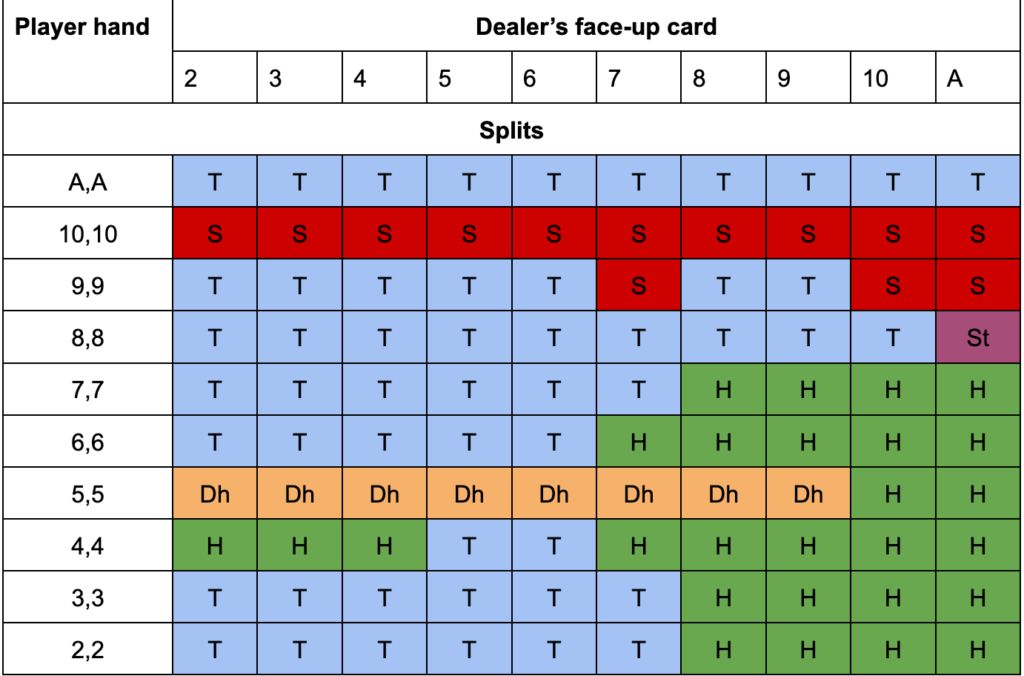
Standing on Soft 17 Strategy (Four to Eight Decks)
You have (mostly) the same criteria to hit with this blackjack strategy, too:
- The shoe has four to eight decks shuffled together.
- The dealer stands on a soft 17.
- After a split, you can double your bet.
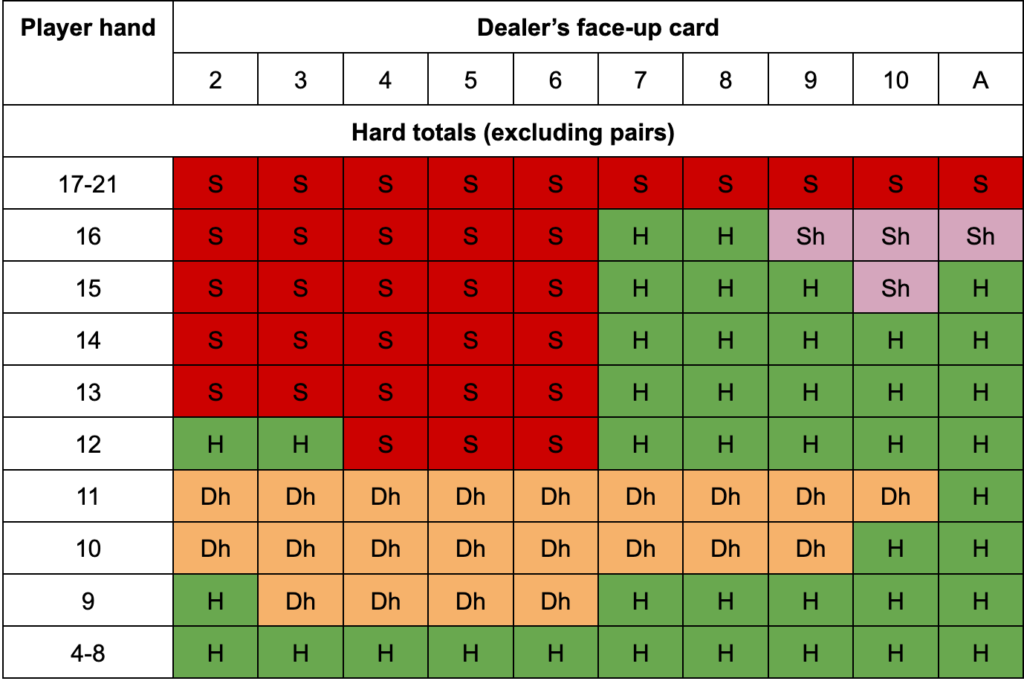
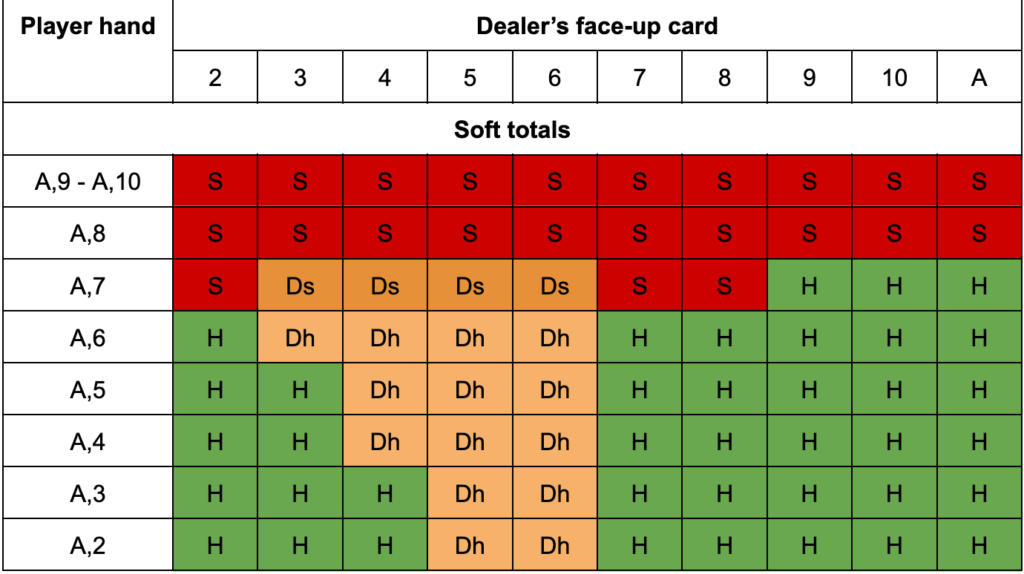

Making Blackjack Work for You
You are actually allowed to bring a strategy card with you to the blackjack table to help you out, but do know that the pace of play tends to be pretty fast. You don’t want to be the player slowing everything down if you have to keep looking at your card over and over. If you don’t have these strategies memorized yet and you really want to play at a brick-and-mortar casino, make sure you’re not the first player at the table so you have time to quickly refer to your card.
Another way to make sure you have a little more time to play and practice your strategy is by trying out some online casinos that allow free play. If you live in New Jersey, you have options for casinos that let you try out some games without having to make a deposit.
Last, you should know that you’ll never be able to decrease the house edge to 0%, but these blackjack strategies can definitely get you below 1%. This will help you to make your money work better for you and keep the house from making too much money off of your games.